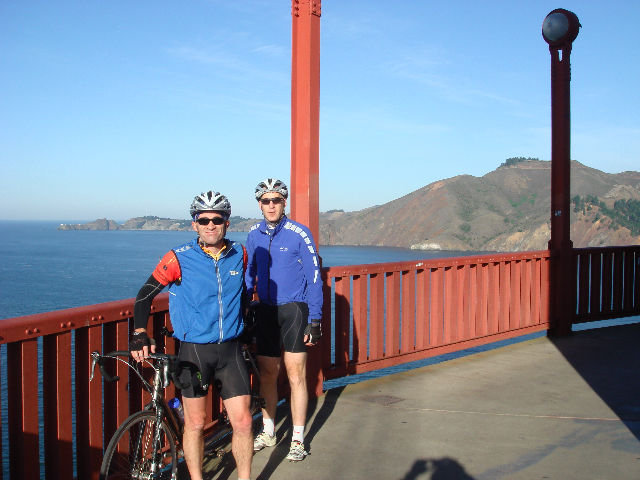 At the beginning of January we warmly welcomed LightHouse board member Chris Downey as he stepped up to begin a term as LightHouse Board president. Chris’s background and skills could not be more synergistic with the year ahead as we complete the design and construction of our new San Francisco headquarters. An architect with more than 20 years’ experience in the field, Chris became fully blind in 2008. Chris went on to use his experiences to consult on building design for the blind and visually impaired. Recent projects include a new Department of Veterans Affairs blind rehabilitation center, a remodeler job to the housing for the blind in New York City, and the new Transbay Transit Center in San Francisco. As one of the few practicing blind architects in the world, Chris has been featured in local, national and international media stories and speaks regularly about architecture and blindness. He also teaches accessibility and universal design at UC Berkeley. LightHouse sat down to chat about his journey with blindness and our strong connection.
At the beginning of January we warmly welcomed LightHouse board member Chris Downey as he stepped up to begin a term as LightHouse Board president. Chris’s background and skills could not be more synergistic with the year ahead as we complete the design and construction of our new San Francisco headquarters. An architect with more than 20 years’ experience in the field, Chris became fully blind in 2008. Chris went on to use his experiences to consult on building design for the blind and visually impaired. Recent projects include a new Department of Veterans Affairs blind rehabilitation center, a remodeler job to the housing for the blind in New York City, and the new Transbay Transit Center in San Francisco. As one of the few practicing blind architects in the world, Chris has been featured in local, national and international media stories and speaks regularly about architecture and blindness. He also teaches accessibility and universal design at UC Berkeley. LightHouse sat down to chat about his journey with blindness and our strong connection.
LightHouse (LH): “Your situation is a little unusual in that you went from full vision to no vision. How has that played out for you?”
Chris: “It is unusual. I had a benign brain tumor in the optic nerve area. I underwent surgery to have the tumor removed. When I woke up from the procedure, I was completely blind. Most people experience diminishing vision over time, so they have time to adjust. I had to learn how to do everything differently very quickly”
LH: “How did you first connect with the LightHouse?”
Chris: “A hospital social worker connected me to the LightHouse. It’s funny, I had a visual memory of the San Francisco building with the braille façade, and so as an architect, I already had a connection with the building. I started by learning O&M skills and braille through the East Bay office.
Many people take six months to a year to go to intensive blind skills-learning programs. I was 45-years-old, in my mid-career years. I had a family, a young son. It was not an option for me to drop out of my life for that long. I was fortunate to be able to go to Enchanted Hills Camp in Napa and participate in an intensive week-long learning session. Connecting with highly productive blind people in this kind of learning environment is very effective. Had there been a San Francisco location with a short, live-in immersive program, that would have been even more ideal. The new LightHouse headquarters will allow us to offer that experience in San Francisco.”
LH: “How did you come to join the LightHouse Board?”
Chris: “Through cycling! I had been an avid cyclist before the surgery. Within 4 months after, I started riding tandem with some of my old cycling buddies. I was cycling again before I could walk the streets. I had been active at my son’s school in Piedmont. Some of the dads from the school got together and bought me a tandem bike from a local bike shop in Piedmont. Well, it so happened that then-LightHouse Executive Director Anita Aaron stopped into the same shop that week to buy a tandem bike as well. The shop owner told her that he had just sold a tandem bike to another blind person. I had returned to work as soon as I could after the surgery and was learning how to do architecture without sight, and had started consulting. Anita was aware of my work as a blind architect and she got the conversation about joining the board started. I joined in 2010.”
LH: “How have things evolved at the LightHouse since then?”
Chris: “Bryan Bashin came on as CEO soon after I joined. The first big change that Bryan made was at Enchanted Hills Camp. We had been contracting out the operations of the camp. Bryan brought the camp management in-house. He hired more blind counselors and blind leadership, and added more camp sessions and types of sessions, including expanding intensive, immersive learning programs. Even at that time, there was a desire bring this immersive programing to San Francisco, but we were limited by our small space. The question of how we could offer week-long sessions in San Francisco arose. The answer was that we had to increase our space. We realized we needed to buy a new property. Things came together beautifully – we had the phenomenal luck of finding a building that was central and that already housed organizations whose work was in line with ours (including the Mayor’s Office on Disability).”
LH: “Can you talk about your personal journey learning to live as a blind person?”
Chris: “I had been an architect for 20 years, and had two university degrees in architecture. I knew I wanted to continue working, but I could not find any blind architects to help me figure it out. There are no self-help books. I went back to my old office. They were incredibly optimistic that I could do it and wanted to help me figure it out. Scott Blanks (now LightHouse’s Senior Director of Programs) had been a mentor of mine and taught me blind tech skills early on. He started coming to the office to train me. Scott is so functional, the office staff insisted that Scott was not blind. Scott raised the expectation at my workplace as to what I could do. They expected that I would be as seamless as Scott. I started to get excited about what I could do.
I was trained to really focus on the environment as an architect, visually, of course. But now I started to focus on the environment through a multi-modality sensory experience – sound, airflow and tactile elements gave me a whole new palette to design with. I got really excited and started to work in a whole new way. Now, I say, if you’re going to lose your sight, get into architecture. You will learn to value other ways of doing things, and free your creativity and problem solve in new ways.” (Check out Chris’ TED Talk on designing for the blind.)
LH: “What’s your vision for your role as LightHouse Board president?”
Chris: “First, I am focused on making the new space our home, as well as taking our new program ideas and making them into a living form, which is exciting and a lot of work. Working as a consultant with the incredibly creative Mark Cavagnero Associates Architects has been amazing. In the process of designing a space for the blind, questions have been asked that have never been asked before. My role is to help nurture the creative process between blind LightHouse staff and volunteers and the architects.
Though the space will be exceptionally advanced, a lot of what is great won’t be noticed. For example, people with low vision can navigate much easier in high contrast, well-lit environments. We worked together to design a space that looks normal, but uses contrast and specialized lighting. Acoustics is another area that is innovative in our new space. Acoustic design is typically not much more than reducing outside noise or separating mechanical spaces to reduce noise. For people who are blind, sound can be used for wayfinding, so we looked at whether there were opportunities to use sound to facilitate navigation. We have worked with our acoustic designers to create a sound environment that helps guide people through the space, so sound does not overwhelm, but instead assists. We are doing more than functional design however. We are asking, how can we make the space delightful to someone without sight? The grip of hand rail, what you feel when you touch the reception desk are things we have considered that are not typically thought about in architecture.
Secondly, we have been incredibly fortunate to have the opportunity of our recent bequest.” (Learn about the LightHouse bequest.) “We are ready to dive into our next strategic plan in 2016. It is the dawn of new day, and it is thrilling to plan for a very exciting future for the LightHouse.”
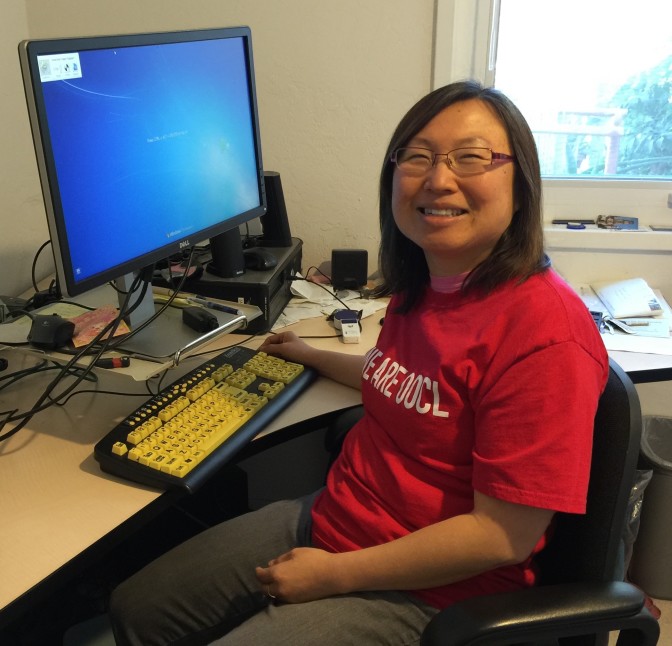 “I worked at the same company for twenty-two years, then they moved to Salt Lake City, and I found myself out of a job. I had no idea what to do. I met with a counselor from the Department of Rehabilitation in Oakland, who told me about LightHouse’s Employment Immersion program. I was reluctant, but I spoke with Kate Williams, [Employment Immersion Coordinator], and she convinced me to give it a try.”
“I worked at the same company for twenty-two years, then they moved to Salt Lake City, and I found myself out of a job. I had no idea what to do. I met with a counselor from the Department of Rehabilitation in Oakland, who told me about LightHouse’s Employment Immersion program. I was reluctant, but I spoke with Kate Williams, [Employment Immersion Coordinator], and she convinced me to give it a try.”
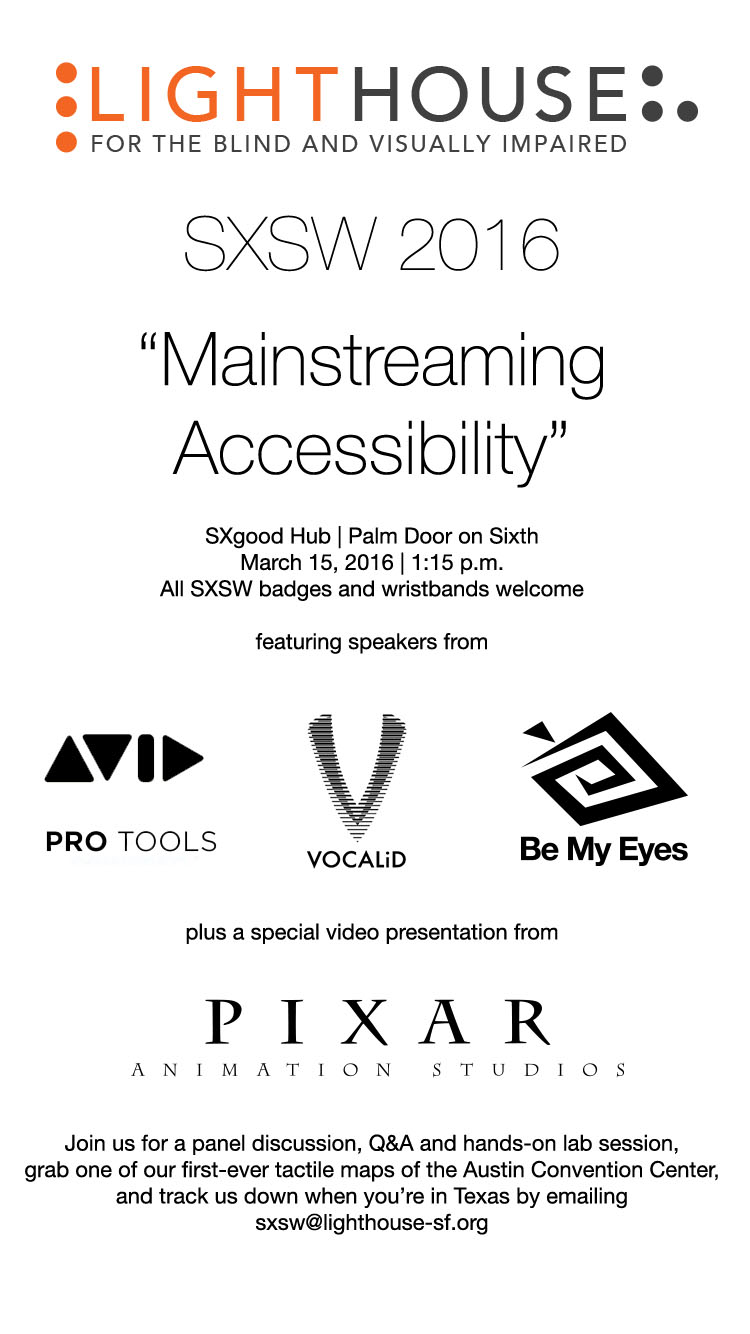
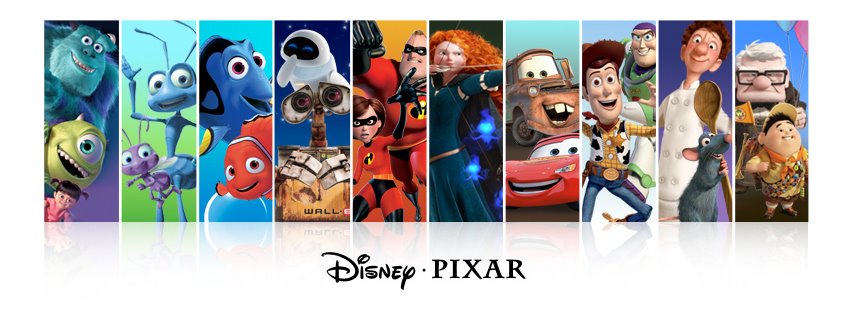
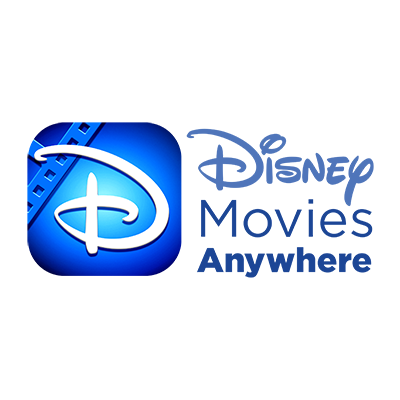
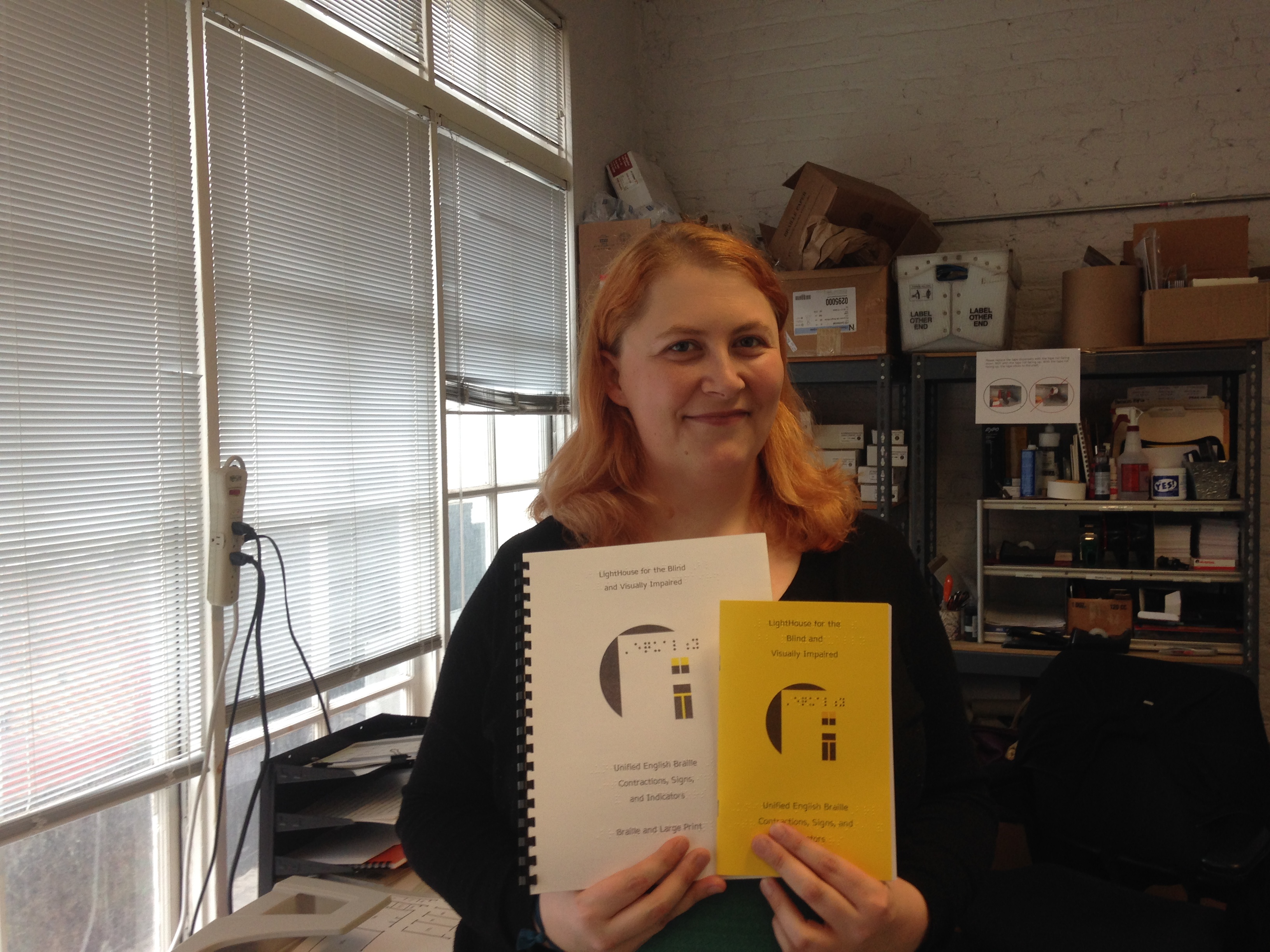 As of January 4, Unified English Braille (UEB) became the official braille code in the United States. Therefore, going forward, the LightHouse will complete all new braille translation projects in UEB, unless specifically requested to do otherwise. This includes braille labels on any tactile graphics and maps.
As of January 4, Unified English Braille (UEB) became the official braille code in the United States. Therefore, going forward, the LightHouse will complete all new braille translation projects in UEB, unless specifically requested to do otherwise. This includes braille labels on any tactile graphics and maps.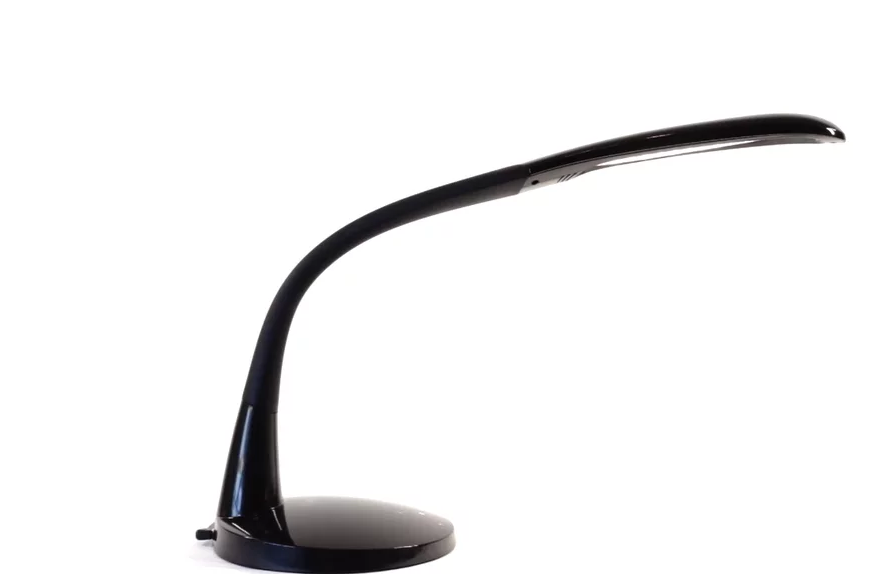 The Stella desk lamp is making waves in the low vision community and is now available at Adaptations in both black and white. It’s a very dynamic lamp with a total of fifteen different lighting intensities. You can choose from three primary light levels – bright white light, soft white light and a softer orange. You can also toggle through five different brightness modes within each of these three light levels. The Stella retails for $180.00, but during February, if you enter the store yelling “Stella!” (à la Marlon Brando in Streetcar Named Desire), we will give you 5% off your purchase of this lamp. You’ll save some money and we’ll share a laugh together.
The Stella desk lamp is making waves in the low vision community and is now available at Adaptations in both black and white. It’s a very dynamic lamp with a total of fifteen different lighting intensities. You can choose from three primary light levels – bright white light, soft white light and a softer orange. You can also toggle through five different brightness modes within each of these three light levels. The Stella retails for $180.00, but during February, if you enter the store yelling “Stella!” (à la Marlon Brando in Streetcar Named Desire), we will give you 5% off your purchase of this lamp. You’ll save some money and we’ll share a laugh together. At the beginning of January we warmly welcomed LightHouse board member Chris Downey as he stepped up to begin a term as LightHouse Board president. Chris’s background and skills could not be more synergistic with the year ahead as we complete the design and construction of our new San Francisco headquarters. An architect with more than 20 years’ experience in the field, Chris became fully blind in 2008. Chris went on to use his experiences to consult on building design for the blind and visually impaired. Recent projects include a new Department of Veterans Affairs blind rehabilitation center, a
At the beginning of January we warmly welcomed LightHouse board member Chris Downey as he stepped up to begin a term as LightHouse Board president. Chris’s background and skills could not be more synergistic with the year ahead as we complete the design and construction of our new San Francisco headquarters. An architect with more than 20 years’ experience in the field, Chris became fully blind in 2008. Chris went on to use his experiences to consult on building design for the blind and visually impaired. Recent projects include a new Department of Veterans Affairs blind rehabilitation center, a 